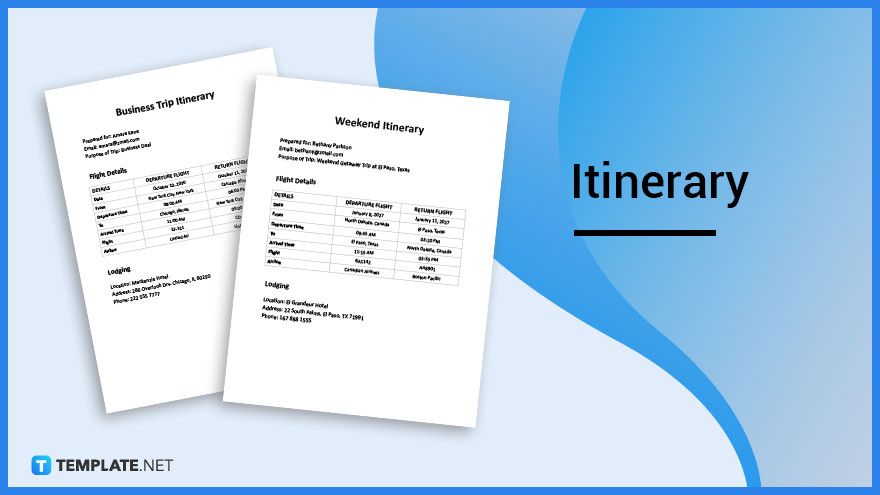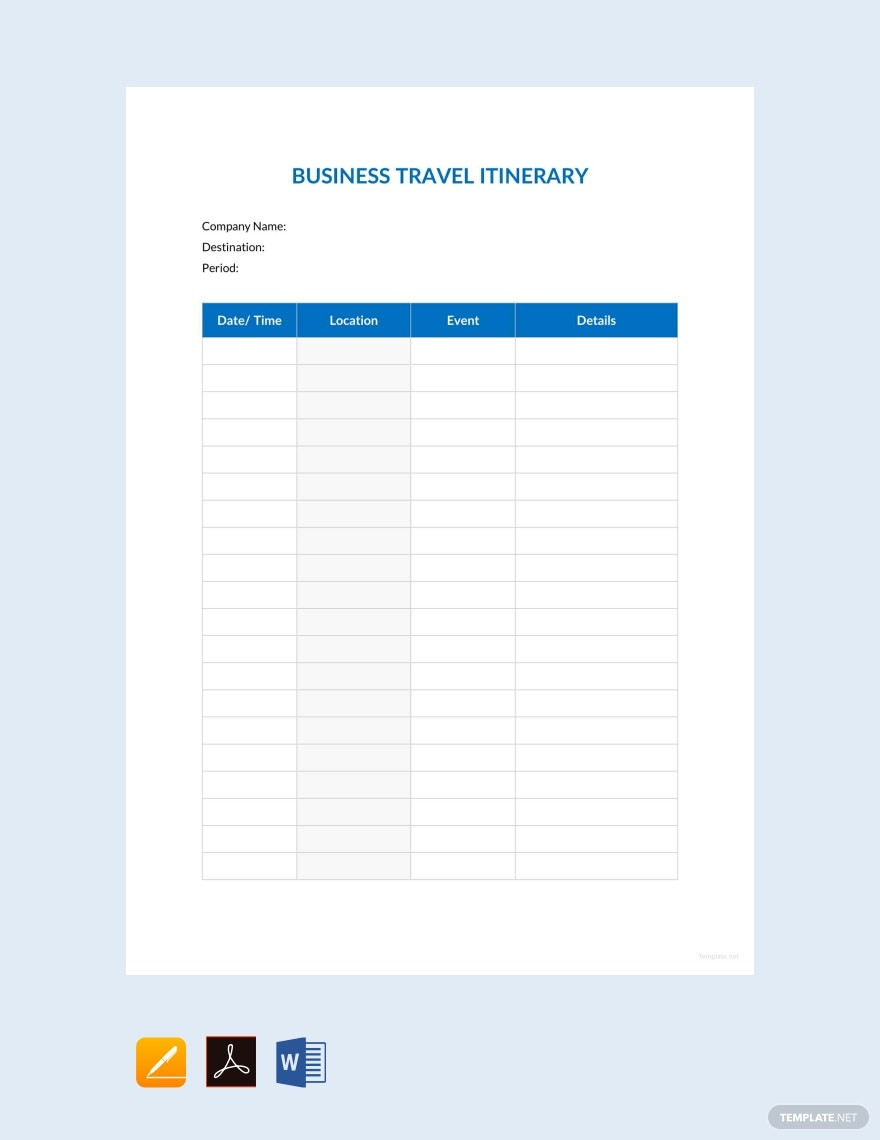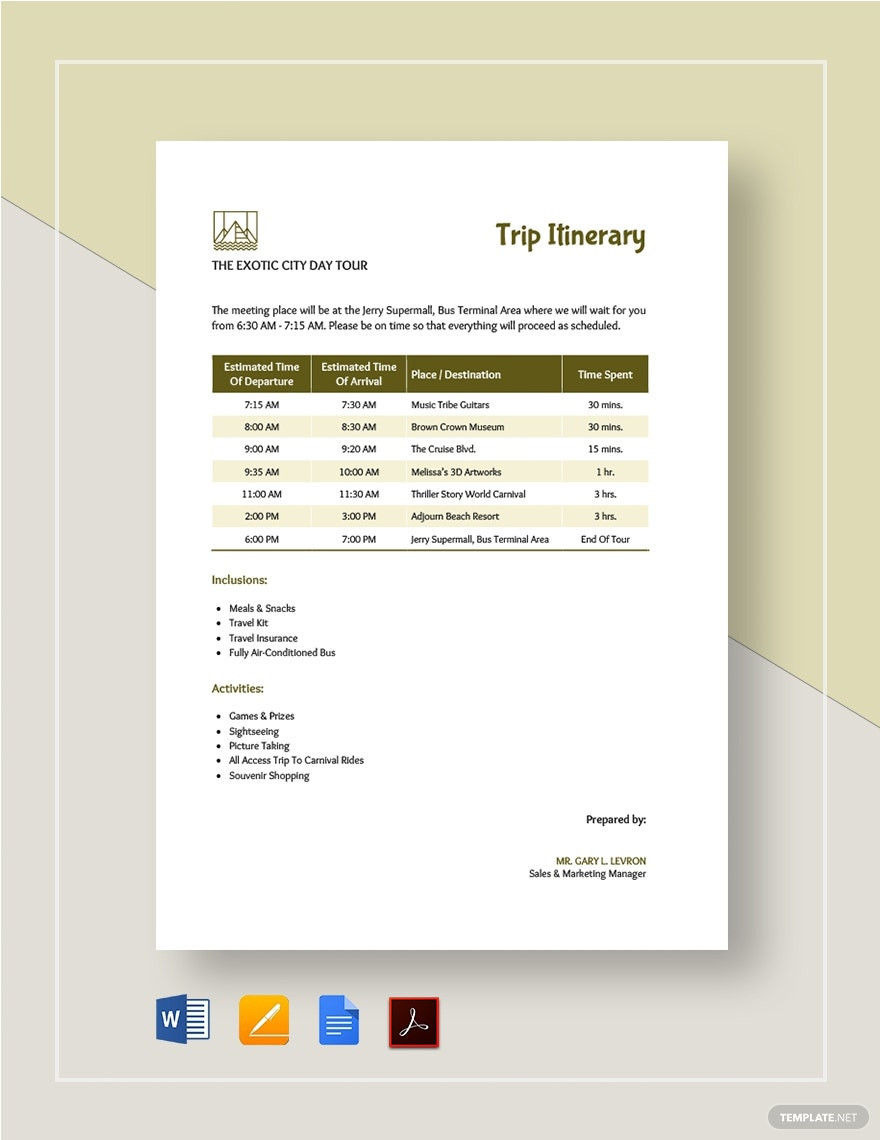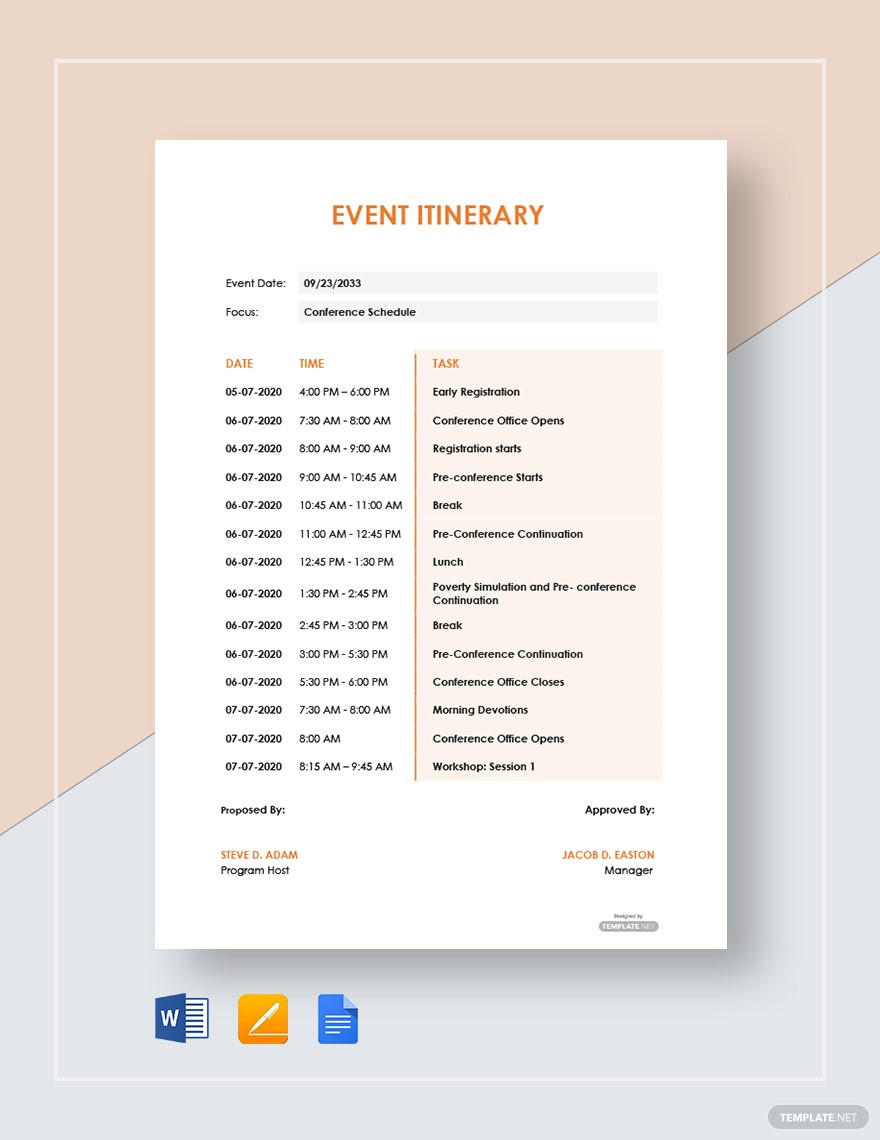Planning a trip, whether for business or leisure, can be exciting but also overwhelming. Amidst the anticipation and preparations, one crucial document stands out for ensuring a smooth and organized journey: the travel itinerary. But what exactly is a travel itinerary, and why is it so important?
 itinerary documents
itinerary documents
This guide will delve into the Travel Itinerary Definition, exploring its meaning, purpose, components, and various types to help you master the art of trip planning.
Understanding the Travel Itinerary Definition and Meaning
At its core, a travel itinerary is a detailed schedule of your trip. It’s more than just a list of destinations; it’s a comprehensive outline that includes dates, times, locations, planned activities, transportation methods, and accommodation details. Think of it as a roadmap for your journey, providing a structured framework to maximize your time and enjoyment while minimizing stress and unexpected hiccups.
In simpler terms, a travel itinerary defines:
- What you will do: Activities, tours, sightseeing.
- Where you will go: Destinations, hotels, landmarks.
- When you will be there: Dates and times for each activity and location.
- How you will get there: Flights, trains, car rentals, public transport.
What Does a Travel Itinerary Actually Do?
A travel itinerary serves several critical purposes for travelers:
- Organization: It brings order to your travel plans, preventing chaos and missed opportunities. By outlining each day, you gain a clear picture of your trip’s flow.
- Time Management: An itinerary helps you allocate time effectively. You can estimate travel durations between locations, allocate sufficient time for activities, and avoid rushing or feeling overwhelmed.
- Budgeting: By planning activities and transportation in advance, you can get a clearer idea of potential costs. This allows for better budget management and helps avoid overspending.
- Efficiency: Itineraries streamline your travel experience. Having pre-booked accommodations, transportation, and tours saves valuable time and reduces the chances of things going wrong on the go.
- Reference: During your trip, the itinerary acts as a handy reference document. You can quickly check schedules, addresses, and confirmation numbers without relying solely on memory or scattered notes.
- Communication: Sharing your itinerary with family or travel companions ensures everyone is on the same page and aware of the plans. It also allows for easy coordination, especially in group travel.
- Visa Requirements: Many countries require a detailed travel itinerary as part of the visa application process. It demonstrates your planned activities and intentions during your stay.
- Immigration Purposes: Immigration officers may ask to see your itinerary upon arrival in a foreign country to understand the purpose and duration of your visit.
Exploring Different Types of Travel Itineraries
While all travel itineraries share the common goal of outlining a trip, they can be tailored to specific travel styles and purposes. Here are some common types of travel itineraries:
1. Business Travel Itinerary
A business itinerary focuses on the professional aspects of a trip. While it includes essential travel details like flights and accommodation, it prioritizes business-related activities.
 business itinerary
business itinerary
Alt text: Example of a business itinerary template, highlighting meeting schedules and corporate travel arrangements.
Key elements of a business itinerary include:
- Meeting schedules with clients or colleagues.
- Conference or trade show details.
- Work-related appointments and deadlines.
- Locations of business venues.
Leisure activities are typically minimized or excluded in a business itinerary, concentrating solely on professional commitments.
2. Trip Itinerary (Leisure/Vacation)
A trip itinerary, often used interchangeably with a vacation itinerary, is designed for leisure travel. It emphasizes experiences, sightseeing, and relaxation.
 trip itinerary
trip itinerary
Alt text: Sample trip itinerary showcasing daily activities, sightseeing destinations, and vacation planning elements.
A trip itinerary may feature:
- Tourist attractions and landmarks.
- Guided tours and excursions.
- Restaurant reservations and culinary experiences.
- Free time for exploration and relaxation.
- Transportation between tourist sites.
Trip itineraries are flexible and can be customized to various travel styles, from adventurous backpacking trips to relaxing beach vacations.
3. Event-Based Travel Itinerary
An event-based travel itinerary is created when travel revolves around attending a specific event, such as a concert, festival, sports game, or wedding.
 event itinerary
event itinerary
Alt text: Event itinerary example, outlining schedules, locations, and activities for event attendees.
This type of itinerary incorporates:
- Event schedules and timings.
- Location of the event venue.
- Pre- or post-event activities.
- Transportation to and from the event.
The itinerary is structured around the event’s schedule, ensuring travelers don’t miss key moments and can make the most of their trip.
4. Specialized Itineraries: Tailoring to Specific Needs
Beyond the common types, itineraries can be further specialized:
- Family Travel Itinerary: Considerations for kid-friendly activities, family accommodations, and slower paces.
- Adventure Travel Itinerary: Focuses on outdoor activities like hiking, trekking, diving, or camping, with detailed gear lists and safety information.
- Luxury Travel Itinerary: Emphasizes high-end accommodations, fine dining, exclusive experiences, and personalized services.
- Budget Travel Itinerary: Prioritizes affordable accommodations, free or low-cost activities, and cost-effective transportation options.
- Solo Travel Itinerary: May include safety considerations, recommendations for solo-friendly activities, and opportunities to meet other travelers.
- Group Travel Itinerary: Crucial for coordinating logistics for multiple people, including shared transportation, group activities, and accommodation arrangements.
Key Components: What to Include in Your Travel Itinerary
A well-structured travel itinerary should include essential details to ensure clarity and ease of use. The core components are:
- Dates: Clearly specify the start and end dates of your trip, and dates for each day’s activities.
- Destinations: List all locations you plan to visit, including cities, towns, specific addresses, and landmarks.
- Activities: Detail planned activities for each day, such as tours, sightseeing, events, or free time.
- Times: Include specific times for flights, train departures, tour start times, and any time-sensitive activities.
- Transportation: Note down flight numbers, train details, car rental information, bus routes, or any pre-booked transportation.
- Accommodation: Include hotel names, addresses, booking confirmation numbers, and check-in/check-out times.
- Contact Information: Add important contact details like hotel phone numbers, tour operator contacts, and emergency contacts.
- Confirmation Numbers/Booking References: Keep track of booking references for flights, hotels, tours, and transportation for easy access.
- Budget (Optional): You can include estimated costs for activities, meals, and transportation to track your spending.
- Notes: Add any relevant notes, such as dress codes, things to bring, local customs, or important reminders.
 What
What
Creating Your Own Effective Travel Itinerary: A Step-by-Step Guide
Designing an itinerary might seem daunting, but breaking it down into steps makes the process manageable:
- Define Your Trip Purpose and Style: Are you traveling for business, leisure, adventure, or relaxation? What’s your preferred travel style (budget, luxury, fast-paced, slow)?
- Choose Your Destination(s) and Duration: Decide where you want to go and how long you’ll be traveling.
- Research Activities and Attractions: Explore things to do and see in your chosen destinations. Look at travel guides, websites, blogs, and social media for inspiration.
- Prioritize and Select Activities: Based on your interests and time, select the activities you want to include in your itinerary. Don’t overschedule; leave room for spontaneity.
- Determine Transportation and Accommodation: Book flights, trains, or rental cars. Reserve hotels or other accommodations in convenient locations.
- Map Out Daily Schedules: Start drafting your itinerary day by day. Allocate time for each activity, considering travel time between locations. Be realistic about what you can achieve in a day.
- Incorporate Flexibility: Build in buffer time and allow for some unscheduled time. Things don’t always go exactly to plan when traveling.
- Organize and Format Your Itinerary: Use a clear and readable format. You can use word processors, spreadsheets, or dedicated itinerary planning apps.
- Review and Refine: Check your itinerary for logical flow, time allocation, and completeness. Share it with travel companions for feedback.
- Finalize and Share: Once satisfied, finalize your itinerary and share it with anyone who needs it. Print a copy or save it on your devices for easy access during your trip.
 How To Design an Itinerary
How To Design an Itinerary
Itinerary vs. Other Planning Documents: Agenda and Schedule
While “itinerary,” “agenda,” and “schedule” are related planning terms, they have distinct meanings:
- Itinerary: Specifically outlines a journey or trip, including destinations, activities, and travel arrangements. It’s travel-focused.
- Agenda: A list of topics or items to be discussed or addressed, typically in a meeting or conference. It’s discussion-focused.
- Schedule: A detailed plan of events or tasks, specifying times and sequences. It’s time-focused and can apply to various contexts beyond travel or meetings.
In essence, an itinerary is a specialized type of schedule tailored for travel, while an agenda is for meetings. A general schedule can encompass various plans, including daily routines, project timelines, or event programs.
Conclusion: Your Itinerary – Your Travel Companion
Understanding the travel itinerary definition and its importance is the first step towards becoming a savvy traveler. A well-crafted itinerary is more than just a document; it’s your personalized guide to a smoother, more enjoyable, and efficient travel experience. Whether you’re a seasoned globetrotter or planning your first getaway, embracing the power of a travel itinerary will undoubtedly enhance your journeys and transform the way you explore the world.
